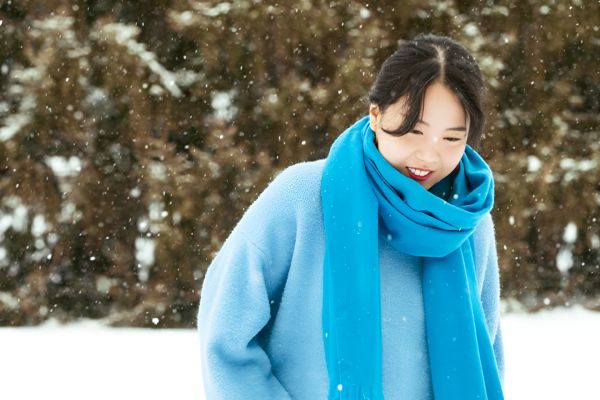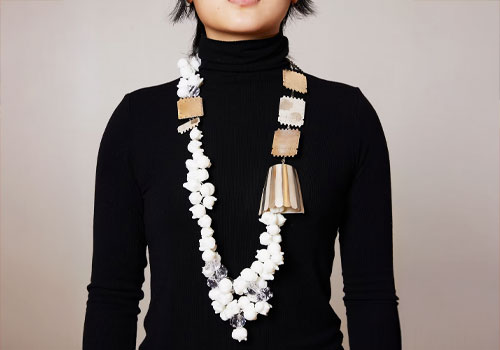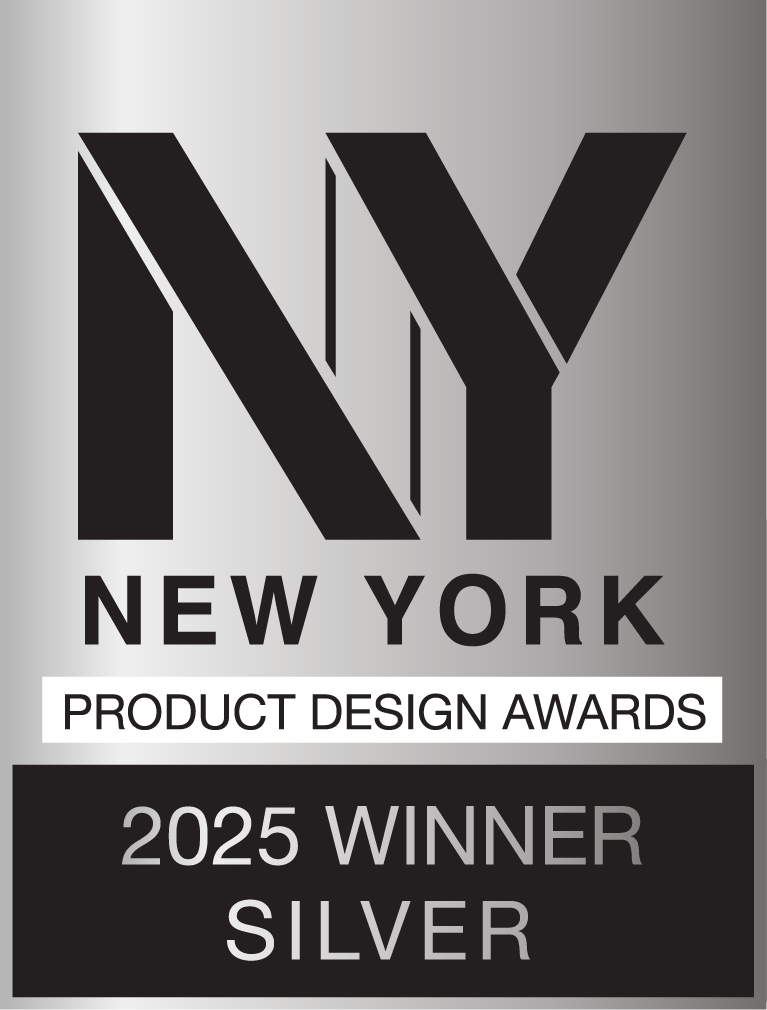
Qianying Zhu
1. Congratulations on winning the NY Product Design Awards! Can you introduce yourself and share about what inspired you to pursue design as a career?
My name is Qianying Zhu, I'm a contemporary jewelry artist and jewelry designer deeply passionate about crafting pieces that serve as personal expressions of identity, culture, and creativity.
My journey into design began from a profound love for art, rooted in childhood experiences of sketching natural landscapes and creating imaginative forms inspired by my cultural heritage. Jewelry design became my chosen medium because it beautifully blends artistic creativity with personal storytelling.
One of my greatest joys as an artist comes from seeing my pieces worn and cherished by others, observing how each creation takes on a unique life through its interaction with the wearer. These personal connections inspire me continually, reinforcing my commitment to designing jewelry that resonates emotionally and culturally, bringing joy and self-expression into everyday life.
2. What role does experimentation play in your creative process? Can you share an example?
Experimentation plays a critical role in my creative process, particularly because my designs often incorporate mixed media. Continuously experimenting and evaluating how different materials interact is essential, as there can be significant differences between an initial idea and its physical realization. Connecting diverse materials also demands creative solutions and extensive experimentation, which keeps the process exciting and full of learning.
For instance, in my award-winning piece "Oops", I featured 3D-printed beads inspired by the Chinese zodiac as central elements of the necklace. Determining how best to connect these beads with metal components required numerous trials and careful consideration.
Personally, I prefer avoiding chemical adhesives like glue, as sustainability and long-term durability are important values in my work. This preference pushed me to explore alternative methods extensively.
After a thorough process of experimentation, considering both feasibility and aesthetics, I ultimately chose knotting and braiding techniques. These traditional yet versatile methods not only provided the desired connection but also enhanced the overall visual appeal and tactile experience of the jewelry.
This experimentation not only resolved the technical challenge but also led to the development of new techniques that have become integral to my design vocabulary.
3. What's the most unusual source of inspiration you've ever drawn from for a project?
One of my most unusual sources of inspiration comes directly from everyday life, particularly the subtle, easily overlooked details that can unexpectedly trigger creativity. I find inspiration often strikes during mundane moments, especially those small, quirky experiences that simultaneously make me laugh and cry.
For example, I once created a jewelry piece inspired by an incident where my necklace always persistently tangled itself in the strangest ways in my jewelry box, despite my careful attempts to organize it. This seemingly trivial yet relatable moment became the foundation for a playful and interactive design, reflecting both humor and frustration.
Capturing these nuanced, humorous aspects of daily life enriches my creative process, allowing me to transform ordinary occurrences into meaningful artistic expressions.
4. What’s one thing you wish more people understood about the design process?
One thing I wish more people understood is the depth of thought and personal narrative behind a piece. For me, creating is never just about making something visually appealing — it's always rooted in emotion, symbolism, or a story I want to tell.
Whether I’m working with traditional Chinese zodiac motifs or exploring materials like enamel and resin, each design carries a piece of my personal journey and cultural reflection. I hope that when people encounter my work, they not only see an object but also feel a connection to the concept and message behind it.
5. How do you navigate the balance between meeting client expectations and staying true to your ideas?
Ideally, clients who come to me are already familiar with my work and appreciate my artistic language. I always make an effort to deeply understand what the client wants to express or achieve through the piece.
However, a non-negotiable for me is that the final work must still carry my design voice and aesthetic. I see each collaboration as a dialogue, not just a service.
By aligning expectations early and sharing my thought process transparently, I can often find a sweet spot where the client feels understood, and I can maintain the integrity of my artistic vision.
6. What were the challenges you faced while working on your award-winning design, and how did you overcome them?
One of the biggest challenges was translating complex cultural symbols — like the Chinese zodiac — into forms that felt modern, playful, and wearable. I didn’t want to replicate tradition; I wanted to reimagine it. Balancing respect for heritage with innovation took rounds of sketching, modeling, and prototyping.
Material experimentation also posed challenges, especially when combining metal with unconventional textures or casting techniques. I overcame this by continuously sampling, testing, and refining, sometimes failing multiple times before arriving at a version that resonated with both my concept and standards.
Winning the award reaffirmed that this persistence — and staying true to my storytelling — was worth it!
7. How do you recharge your creativity when you hit a creative block?
When I experience a creative block, my primary strategy is to step away from my workspace and get out of the house. Because much of my inspiration is drawn from everyday life, actively engaging in the world around me and enjoying a fulfilling day outside can significantly recharge my creativity.
Additionally, nature serves as a powerful source of healing and inspiration for me. Going on hikes or simply spending time resting outdoors allows me to reconnect, quickly re-energizing my creative spirit and often sparking fresh ideas.
However, if I find myself particularly drained or exhausted, I grant myself a full day off to catch up on rest—sometimes, a good sleep is the best remedy. Taking care of myself physically and mentally is essential to maintaining consistent creativity and inspiration.
8. What personal values or experiences do you infuse into your designs?
My designs deeply reflect my personal values of mindfulness and celebrating life's small joys. These principles are not only central themes I strive to communicate through my creations, but also constant reminders to myself.
Having struggled frequently with anxiety and overthinking, I've often found myself exhausted from being overly focused on outcomes and future plans, unintentionally overlooking the beauty of the present moment.
The experience of losing a loved one profoundly reshaped my perspective, emphasizing the importance of cherishing everyday experiences and appreciating the small, joyful moments that make life meaningful.
Through my work, I aim to capture and celebrate these moments, reminding both myself and others that being fully present is equally important to—and often enriches—future accomplishments.
9. What is an advice that you would you give to aspiring designers aiming for success?
My advice would be to stay hands-on and keep doing. Don’t wait for a perfect idea — start with what you have, make samples, test materials, and refine your work through real practice. A lot of my designs came from trial and error — sometimes it’s only after physically making something that I realize what works and what doesn’t.
Also, take time to think about why you’re creating something. Having a clear concept or personal reason behind a piece gives it much more strength and direction. For me, many of my works are rooted in cultural memory or personal emotion, and that keeps me motivated even when the process gets tough.
Lastly, stay connected. Talk to other designers, join exhibitions, and apply for opportunities. Getting your work out there and receiving feedback — even rejection — is all part of the growth. Keep learning, keep adjusting, and most importantly, keep going.
10. What's one question you wish people would ask you about your work, and what's your answer?
One question I jokingly wish people would ask me is, “Can I buy this piece?” to which I'd eagerly reply, “Of course!” and promptly share the price—just kidding!
On a more serious note, I genuinely enjoy when people ask about the inspiration behind my work. It gives me the opportunity to reveal hidden jokes and surprising sources of inspiration embedded in my designs.
Additionally, I always love turning the question around and asking them about their feelings and interpretations of my creations, because ultimately, how my art resonates with others matters most to me.

